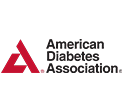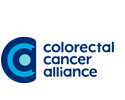Does CAR-T Cell Therapy Belong in Community Clinics?
CAR T-cell therapy (CAR-T) has emerged as a highly innovative and promising option for patients with cancer. Until recently, the use of CAR-T has been restricted to small clinical trials, primarily with patients with advanced blood cancers. These trials often are conducted at large, academic medical centers in major metropolitan areas.
As CAR-T continues to evolve, and new therapies are developed and brought to market, will they be accessible to all cancer patients, especially the large number of people with cancer who are treated in community oncology clinics? Real World Health Care sat down with Frank Senecal, MD, a medical oncology provider with Northwest Medical Specialties, PLLC, in the Tacoma, Washington area, to find out. Dr. Senecal is an active member of the Community Oncology Alliance (COA), a non-profit organization that advocates for community oncology patients and practices.
Benefits of Community Oncology
Real World Health Care: How does the COA help to support cancer patients?

Frank Senecal, MD
Frank Senecal: The mission of the COA is to ensure that cancer patients receive quality, affordable and accessible cancer care in their own communities. Cancer treatments can be intense and span many years, requiring regular physician visits. Keeping patients close to their homes, families and support networks lessens the burden of this devastating disease.
For 17 years, COA has built a national grassroots network of community oncology practices, like mine, to advocate for public policies that benefit patients. One part of that work is that we identify treatments and technologies that can be safely provided in the community clinic environment and work with regulatory agencies to get those treatments approved for community clinic implementation. Our members, who come from all levels of cancer care delivery, volunteer their time on a regular basis to lead COA and serve on its committees.
Delivering the Promise of CAR-T
RWHC: How is the COA working to ensure that patients treated in community oncology clinics have access to new treatment options like CAR-T?
FS: The COA has stated formally that the Centers for Medicare & Medicaid Services (CMS) should not limit CAR-T site of care appropriateness strictly to hospitals. Limiting coverage for CAR-T therapy to the hospital setting will exclude other viable settings of care and limit patients’ options when trying to locate a provider. It is the COA’s position that any well-staffed and experienced sites, or clinics, that can meet the quality, safety and operational prerequisites for delivery of CAR-T treatment should be able to provide such treatment.
One key clinical trial supports this theory, in that 26 percent of adult patients in trials were infused in the outpatient setting. Another study showed decreased resource utilization for patients receiving CAR-T infusion in the outpatient setting, including a 40 percent decrease in their number of hospital days.
Many community cancer centers have the qualifications and experience to administer highly complex treatments like CAR-T. As a point of reference, consider stem cell transplants, which are similar in complexity to CAR-T therapy, and are performed successfully in the community oncology practice setting. Bispecific antibodies also are being administered in community, non-academic settings.
Indeed, some community oncology practices already have or are currently participating in studies on CAR-T and have demonstrated abilities in apheresis, cell processing and infusion, and lymphodepleting chemotherapy, as well as toxicity management.
For example, my clinic is involved in the TRANSCEND-PILOT-017006 trial, and enrolling patients to determine the efficacy and safety of a CAR-T line for aggressive B-cell non-Hodgkin lymphoma (NHL) in patients who have relapsed after conventional therapy and for whom stem cell transplant is not an option due to age or co-morbidities. Ours is the only site in the northwestern United States participating in this international trial and one of the few community clinics participating. Demonstrating the expertise to carry out a trial in the community clinic setting will be an important step toward bringing CAR-T therapy to more patients.
Managing CAR-T Side Effects in Community Clinics
RWHC: Are community clinics equipped to handle adverse side effects such as cytokine release syndrome (CTS) and neurotoxicity?
FS: Fortunately, we’re seeing CAR-T toxicities reducing as engineering improves and better CAR-T cell constructs are developed.
Safety is, of course, paramount when making decisions around site-of-care eligibility. As stated previously, a basic requirement to administer CAR-T therapy includes toxicity management. Community clinics aren’t going to get involved in CAR-T unless they have the staff and expertise to recognize and react properly to symptoms. They need a 24/7/365 organization of doctors, nurses and clinical staff that can be responsive to patients, for example, if symptoms develop at home, and get them in, evaluated and cared for.
Some community oncology clinics, including mine, participate in the oncology medical home model, which focuses on coordinating the highest quality care in an accessible, efficient manner and in the lowest cost setting for the patient. This structure is ideal for supporting emerging treatment options like CAR-T. Plus, many community clinics have established relationships with hospitals, which can be leveraged if needed.
The Cost of CAR-T Therapy
RWHC: How does the cost of CAR-T therapy affect the ability of patients in community clinics to access the treatment?
FS: Community oncology practices are less expensive settings for care, and studies show that the cost of care and the rate of emergency department utilization are lower for patients in the community setting than those in hospital outpatient departments. I expect that, while hospitals will continue to play an important role, we will eventually see more patients receiving CAR-T therapy on an outpatient basis.


















